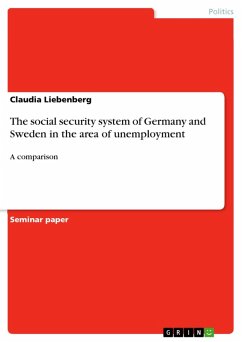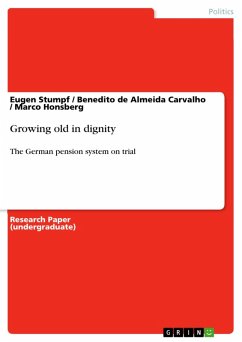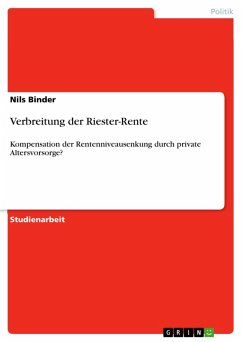
Similar Solutions to Similar Problems? (eBook, ePUB)
A distributive analysis of the Italian and German pension reform trajectories against the backdrop of the OMC
Versandkostenfrei!
Sofort per Download lieferbar
Statt: 27,95 €**
18,99 €
inkl. MwSt. und vom Verlag festgesetzt.
**Preis der gedruckten Ausgabe (Broschiertes Buch)
Alle Infos zum eBook verschenkenWeitere Ausgaben:

PAYBACK Punkte
0 °P sammeln!
Master's Thesis from the year 2009 in the subject Politics - Topic: European Union, grade: 18,5/20, Vrije University Brussel, course: Master Thesis submitted within the Subject of EU Social and Educational Policies, language: English, abstract: This Master Thesis provides a cross-country comparison of the German and Italian pension reform trajectories between 1989 and 2008 against the backdrop of the Open Method of Coordination in the field of old-age social security. Starting from the observation that, at the end of the 1980s, Italy and Germany faced similar challenges related to the long-ter...
Master's Thesis from the year 2009 in the subject Politics - Topic: European Union, grade: 18,5/20, Vrije University Brussel, course: Master Thesis submitted within the Subject of EU Social and Educational Policies, language: English, abstract: This Master Thesis provides a cross-country comparison of the German and Italian pension reform trajectories between 1989 and 2008 against the backdrop of the Open Method of Coordination in the field of old-age social security. Starting from the observation that, at the end of the 1980s, Italy and Germany faced similar challenges related to the long-term financial sustainability of their respective pension system, this study highlights the social implications of the reform strategy adopted in each country. More precisely, the issue of pension reform is approached form a distributive angle, building on the work of both Camila Arza on the new distributional principles of contemporary pension policies and of John Myles on the issue of intergenerational fairness with respect to old-age social security reform. The Italian and German pension reform trajectories are dealt with in separate chapters, focusing on the way in which the subsequent reform packages affected the social distribution of rights, resources and risks associated with old-age as well as on the way in which the costs of the reform are apportioned between generations. The conclusion provides for a comparison between the two reform trajectories studied. It highlights some remarkable similarities at the level of the architectural design of the two pension systems as well as with respect to the introduction of self-adjusting mechanisms within the annuity formula but also stresses the obvious differences between the reform strategies implemented over the last two decades, in particular with regard to the issue of collective burden sharing between generations.
Dieser Download kann aus rechtlichen Gründen nur mit Rechnungsadresse in A, B, BG, CY, CZ, D, DK, EW, E, FIN, F, GR, HR, H, IRL, I, LT, L, LR, M, NL, PL, P, R, S, SLO, SK ausgeliefert werden.













